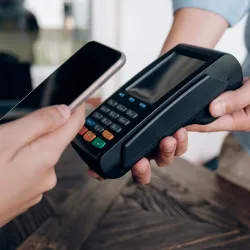Industry Knowledge
3 Ways Luxury Brands Can Win in the Age of CX
Leading luxury brands are not only known for their high-end goods but also their exclusive events and over-the-top events and activations. Successes far outweigh the failures, but when something goes wrong, customers remember more. To win, the level of experience must match the level of product or service.
For example, an Italian fashion house made headlines for an alleged miscommunication with a VIP client who made a deposit on a haute couture item in January, only to see a celebrity wearing the exact piece at an event in May.
When a celebrity or influencer — many are both now — is impacted, this kind of misstep can have a cascading effect. Customers paying top dollar for a prestigious product expect the luxury experience to follow well beyond purchase. And when brands don’t rise to the occasion, their reputation and sales can suffer.
As Luxury Daily points out, “Luxury brands do not fail because of poor products or a lack of heritage. Often the worst performing brands have incredibly good products. Instead, they fail because they are unable to engage with their clients in meaningful ways. Clients expect an emotional journey, one that makes them feel valued, inspired and part of something exceptional.”
Here are three ways luxury brands can win in the Age of CX.
Focus on storytelling
The reality is: Younger generations are taking a larger share of the luxury market. A Bain & Company report projects that “by 2030, Gen Z will account for 25% to 30% of luxury market purchases, while millennials will account for 50% to 55%.”
And for these consumers, it’s not enough to own a luxury item. It must come with a story that resonates with their values, aspirations and personal identities. This shift is driving a fundamental change in the luxury market, where storytelling and the overall brand experience now play a central role.
Brands like Tiffany & Co. have embraced this approach with its Blue Box Café — an elegant dining experience, in a space decked out with Tiffany blue. Last year, the company also unveiled its newly renovated flagship store on Fifth Avenue with immersive floor-to-ceiling digital displays of iconic New York scenery.
Airlines are also elevating their first-class experience through partnerships with luxury brands, enhancing the overall journey for their high-end clientele. For example, Delta Airlines is collaborating with Italian brand Missoni for its Delta One amenity kits.
In these instances, buyers can become part of the brand story.
Apply the cutting-edge technology for personalized experiences
Spanning buyer generations and product categories, cutting-edge technology has become indispensable. Dior, for example, uses augmented reality (AR) to allow customers to try on earrings via their smartphones. The activation resulted in a 36% increase in purchase intent, according to a CX Dive report.
Versace is also using AR, collaborating with Snapchat to launch its new Mercury sneaker collection. The Versace Mercury Lens on Snapchat allows sneaker enthusiasts to virtually try on the futuristic footwear through an interactive journey, blending digital and physical worlds.
Behind the scenes, AI and data analytics are helping personalize the customer journey, track customer preferences and tailor communications and product recommendations. AI is also helping high-end brands combat counterfeits with image recognition tools to ensure product authenticity and detect fake goods proliferating on other sites and platforms.
Reinvent what luxury customer service means
From experience to service, there may have been a time where the sense of luxury was only delivered by luxury brands to their well-to-do consumers. Now, all types of buyers across industries have massive expectations.
As Zendesk points out, “The affluent invented personalization in customer service. They were the only ones who could expect the thing they wanted to be delivered yesterday. And they were the only ones who could expect customer service reps to adapt to their mood. But the lines between luxury customer service and customer service are beginning to blur.”
And, while delivering a great experience is essential during the buying journey, it's even more critical when something goes wrong. Experience and service must align.
For example, a W Hotels executive shared in a Business of Fashion interview, “We have evolved the traditional role of the concierge to position them as a next generation insider, offering a personalized service connecting guests to experiences in the hotel to drive differentiation. We are also leveraging social media platforms in terms of how we communicate with our guests, because people no longer pick up the phone and call the hotel to find out what’s available.”
Harrods has a similar initiative: access to personal shoppers and stylists, virtual concierge support and after sales care. What’s more, the luxury retailer uses technology and data to gather customer insights and to deliver a personalized, seamless experience whether in-store or online.
HBR suggests companies move from a customer-centric approach to a “life-centric” strategy. “Businesses also need to expand their understanding of the forces that most profoundly affect customer’s lives. Customer analytics alone are no longer enough — monitoring changes in technology, culture, politics, health, the environment, and the economy in a much deeper way has to be part of the process.”
Experience is everything
The pressure on luxury brands is intensifying. Declining stock prices, increased competition and a slowdown in global luxury sales growth indicate the need for change. Investors are taking notice, pushing businesses to deliver stronger results.
For companies in the luxury space, this means recognizing that customer experience and service are just as important as the product itself.
Bain & Company advises, “In an increasingly crowded market, brands must focus on creativity and innovation to enhance relevance to consumers, with the ultimate goal of continuing to expand their client bases while cultivating brand lovers.”
By investing in experiential activations, cutting-edge technology and bespoke customer service, brands can not only meet the demands of today’s discerning consumers but also foster a customer for life.
References
We exist to empower people to deliver Ridiculously Good innovation to the world’s best companies.
Services










